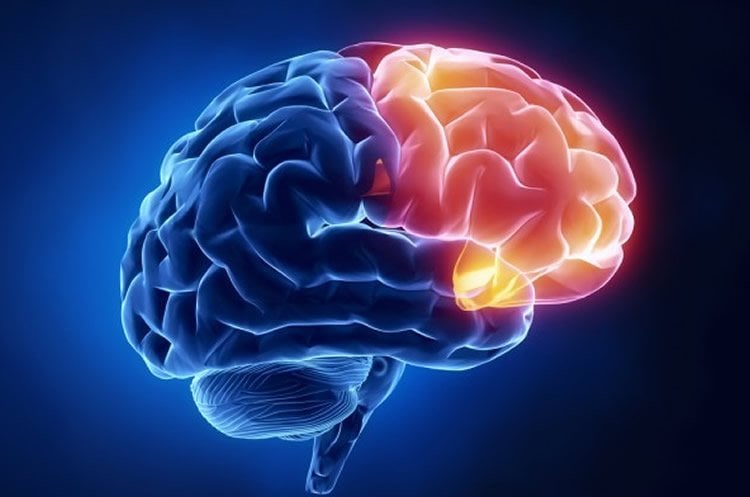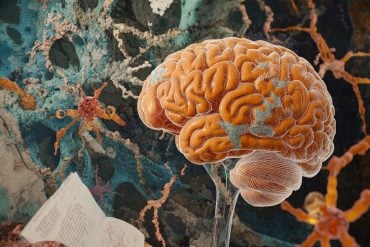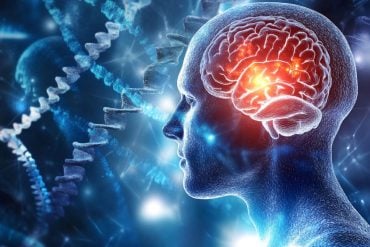Safe levels of electrical stimulation can enhance your capacity to think more creatively, according to a new study by Georgetown researchers.
Georgetown psychology professor Adam Green and Dr. Peter Turkeltaub of Georgetown University Medical Center (GUMC) and MedStar National Rehabilitation Network, and a team of colleagues published the study yesterday online in Cerebral Cortex.
The team used Transcranial Direct Current Stimulation (tDCS) to stimulate an area of the brain known to be associated with creativity in combination with giving test subjects verbal cues to think more creatively.
“We found that the individuals who were most able to ramp up activity in a region at the far front of the brain, called the frontopolar cortex, were the ones most able to ramp up the creativity of the connections they formed,” Green explains. “Since ramping up activity in frontopolar cortex appeared to support a natural boost in creative thinking, we predicted that stimulating activity in this brain region would facilitate this boost, allowing people to reach higher creative heights.”
Use of tDCS targeting frontopolar cortex in two creativity tasks allowed the test subjects to form more creative analogical connections between sets of words, and to generate more creative associations between words.
“This work is a departure from traditional research that treats creativity as a static trait,” Green says. “Instead, we focused on creativity as a dynamic state that can change quickly within an individual when they ‘put their thinking cap on.’ ”
“The findings of this study offer the new suggestion that giving individuals a “zap” of electrical stimulation can enhance the brain’s natural thinking cap boost in creativity,” he adds.
The researchers wrote that their results provide “novel evidence” that tDCS enhances the “conscious augmentation of creativity elicited by cognitive intervention, and extends the known boundaries of tDCS enhancement to analogical reasoning, a form of creative intelligence that is a powerful engine for innovation.”
Turkletaub, a GUMC cognitive neurologist, hopes that one day doctors may be able to improve creative analogical reasoning using both cueing and tDCS to help people with brain disorders.

“People with speech and language difficulties often can’t find or produce the words they need,” he explains. “Enhancing creative analogical reasoning might allow them to find alternate ways of expressing their ideas using different words, gestures, or other approaches to convey a similar meaning.”
Green and Turkeltaub say that although their results are promising, “it is important to be cautious about applications of tDCS.”
They say that much remains unknown about exactly how tDCS affects brain function, and early reports of tDCS effects need further replication before researchers can further gauge how substantive these effects are.
“Any effort to use electric current for stimulating the brain outside the laboratory or clinic could be dangerous and should be strongly discouraged,” Green cautioned.
Funding: This work was supported by awards from the National Science Foundation, The John Templeton Foundation, the National Center for Advancing Translational Sciences via Georgetown Howard Universities Center for Clinical and Translational Science (KL2 TR000102) and Pymetrics.
Source: Ryan King – Georgetown University Medical Center
Image Credit: The image is adapted from the Georgetown University press release.
Original Research: Abstract for “Thinking Cap Plus Thinking Zap: tDCS of Frontopolar Cortex Improves Creative Analogical Reasoning and Facilitates Conscious Augmentation of State Creativity in Verb Generation” by Adam E. Green, Katherine A. Spiegel, Evan J. Giangrande, Adam B. Weinberger, Natalie M. Gallagher and Peter E. Turkeltaub in Cerebral Cortex. Published online April 13 2016 doi:10.1093/cercor/bhw080
Abstract
Thinking Cap Plus Thinking Zap: tDCS of Frontopolar Cortex Improves Creative Analogical Reasoning and Facilitates Conscious Augmentation of State Creativity in Verb Generation
Recent neuroimaging evidence indicates neural mechanisms that support transient improvements in creative performance (augmented state creativity) in response to cognitive interventions (creativity cueing). Separately, neural interventions via tDCS show encouraging potential for modulating neuronal function during creative performance. If cognitive and neural interventions are separately effective, can they be combined? Does state creativity augmentation represent “real” creativity, or do interventions simply yield divergence by diminishing meaningfulness/appropriateness? Can augmenting state creativity bolster creative reasoning that supports innovation, particularly analogical reasoning? To address these questions, we combined tDCS with creativity cueing. Testing a regionally specific hypothesis from neuroimaging, high-definition tDCS-targeted frontopolar cortex activity recently shown to predict state creativity augmentation. In a novel analogy finding task, participants under tDCS formulated substantially more creative analogical connections in a large matrix search space (creativity indexed via latent semantic analysis). Critically, increased analogical creativity was not due to diminished accuracy in discerning valid analogies, indicating “real” creativity rather than inappropriate divergence. A simpler relational creativity paradigm (modified verb generation) revealed a tDCS-by-cue interaction; tDCS further enhanced creativity cue-related increases in semantic distance. Findings point to the potential of noninvasive neuromodulation to enhance creative relational cognition, including augmentation of the deliberate effort to formulate connections between distant concepts.
“Thinking Cap Plus Thinking Zap: tDCS of Frontopolar Cortex Improves Creative Analogical Reasoning and Facilitates Conscious Augmentation of State Creativity in Verb Generation” by Adam E. Green, Katherine A. Spiegel, Evan J. Giangrande, Adam B. Weinberger, Natalie M. Gallagher and Peter E. Turkeltaub in Cerebral Cortex. Published online April 13 2016 doi:10.1093/cercor/bhw080






